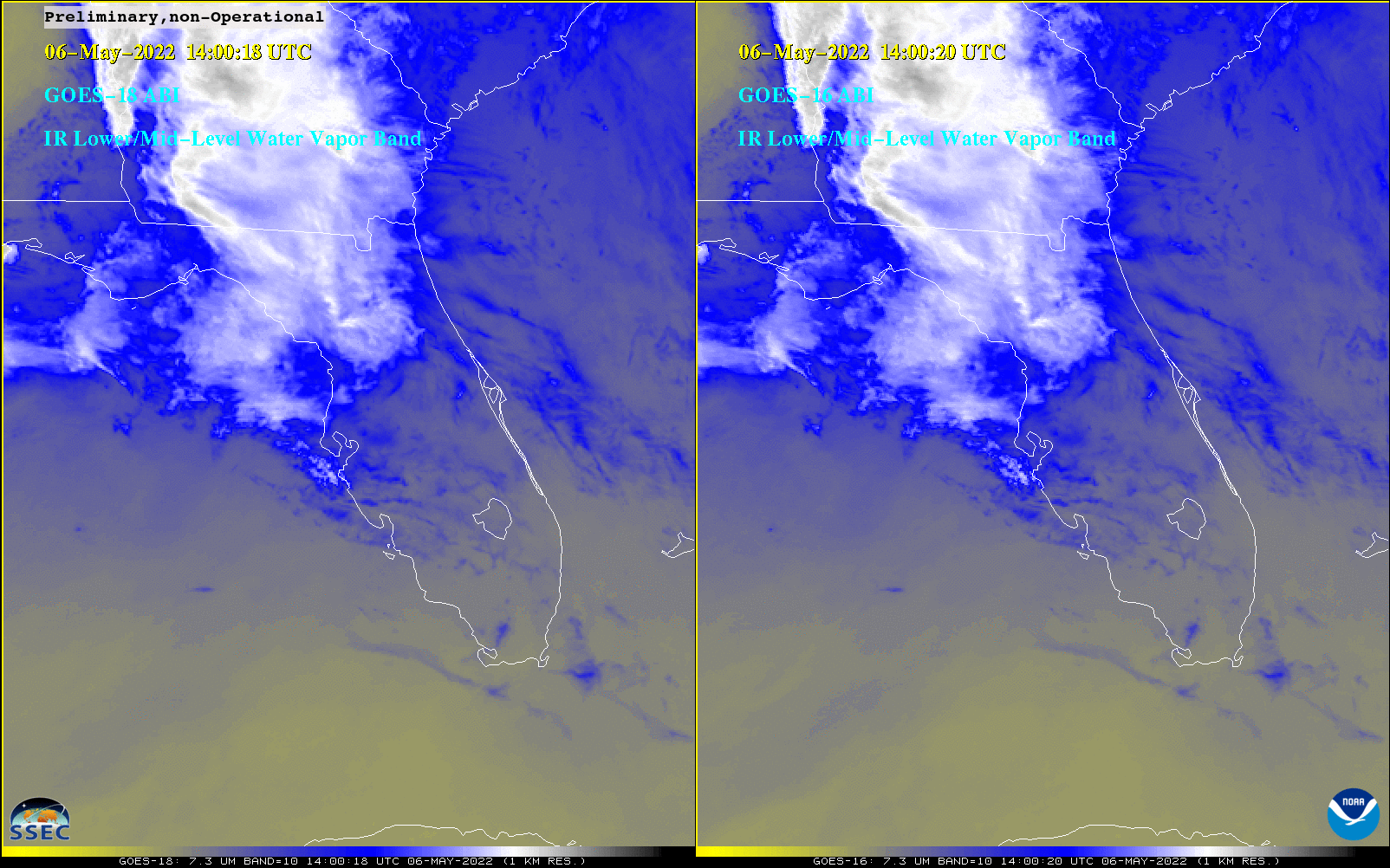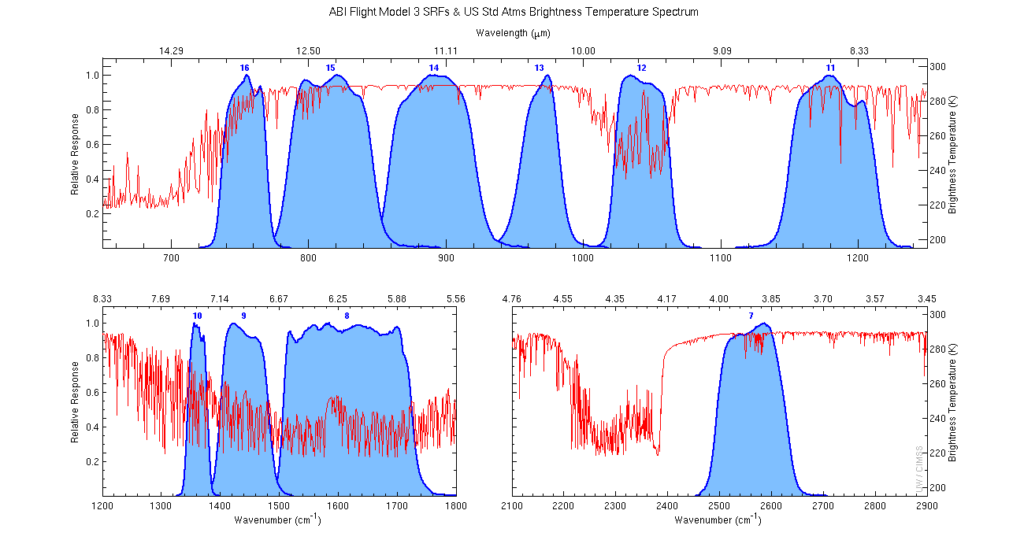GOES-18 ABI Imagery Comparisons
NOAA and NASA recently released the first ABI (Advanced Baseline Imager) imagery from GOES-18. GOES-T was launched on March 1, 2022. (see the GOES-T launch as GOES-16 and GOES-17 monitored the rocket signature). GOES-18 is the third (of four) in the GOES-R series and is currently located above the equator at approximately 90W. GOES-18 is slated to become NOAA’s operational GOES-West in early 2023 after going through extensive post-launch testing. Also, see this CIMSS Satellite Blog post or this Satellite Liaison Blog post.
GOES-18 Compared to other GOES
While it is still very early in the post-launch test period, good qualitative agreement has been shown to other GOES imagers, except when comparing to GOES-17 during times it is affected by the Loop Heat Pipe issue. Of course, due to parallax and other reasons, there are expected to be differences, especially at larger view angles. The above loop as a mp4 and animated gif. Or versions that toggle between GOES-18 and GOES-16 only (mp4 and animated gif).

GOES-18 images of the western United States collected by the Advanced Baseline Imager (ABI) on May 6, 2022. The GOES-18 ABI band 10 (7.3 micrometers) image is on the left, while the GOES-16 image is on the right. Note that the data are in the same projection. Warmer brightness temperatures are mapped to warmer colors. Time animations (from 12 to 22 UTC) of these 2 panels are available for each band: 1, 2, 3, 4, 5, 6, 7, 8, 9, 10, 11, 12, 13, 14, 15, and 16 (mp4).

GOES-18 image of the United States collected by the ABI on May 6, 2022. The GOES-18 ABI band 10 (7.3 micrometers) image is on the right, while the GOES-17 image is on the left. This 2-panel “water vapor” image shows overall agreement, with less noise shown on GOES-18 compared with GOES-17. These GOES-18 ABI are early images, calibration improvements are possible. Time animations (from 12 to 22 UTC) of these 2 panels are available for each band: 1, 2, 3, 4, 5, 6, 7, 8, 9, 10, 11, 12, 13, 14, 15, and 16 (mp4).
3-panel Comparisons (GOES-17, -18, -16)
These 3.9 mircometer band comparisons are thanks to Scott Bachmeier. Direct links for the CA and NM cases of a CIMSS Satellite Blog.
ABI Instrument Response Functions

The ABI has 16 spectral bands, 2 in the visible, 4 in the near-infrared (or “near-visible”) and 10 in the infrared part of the electromagnetic spectrum. The instrument response functions can be found both on CIMSS and Calibration Working Group sites.
H/T
Thanks to the many (thousands) who made the GOES-18 ABI possible. These are GOES-18 ABI are early images (preliminary and non-operational, future calibration improvements are possible. geo2grid and McIDAS-X software was used in generating these images. More about GOES-16 and GOES-17.

